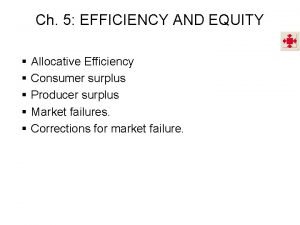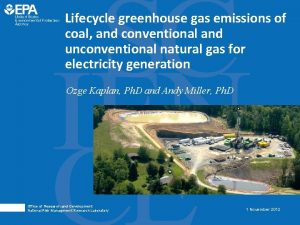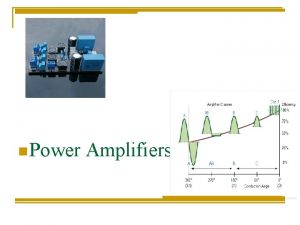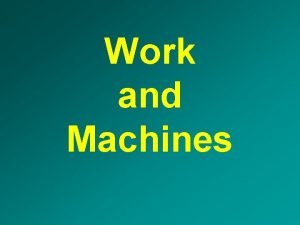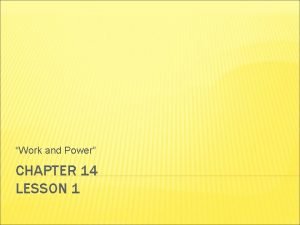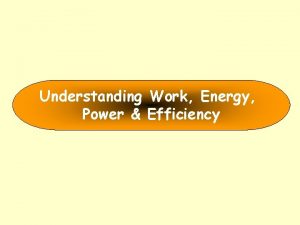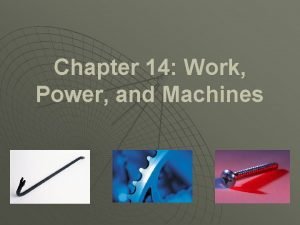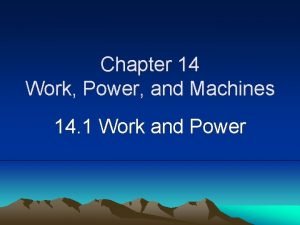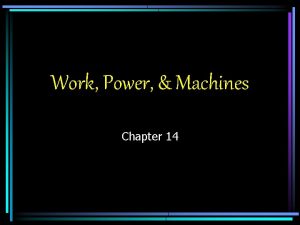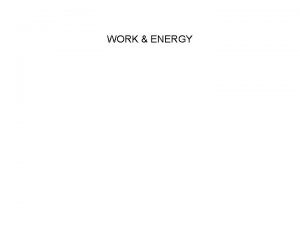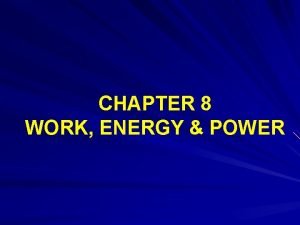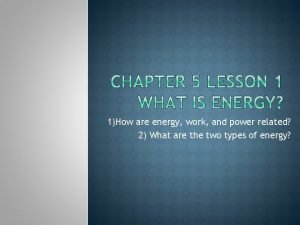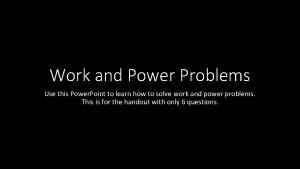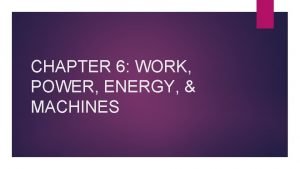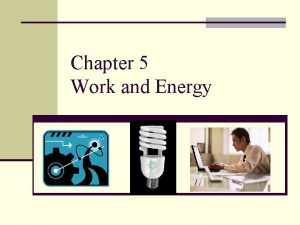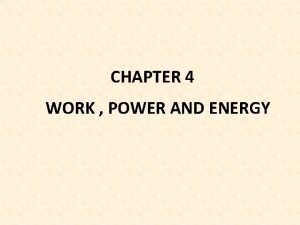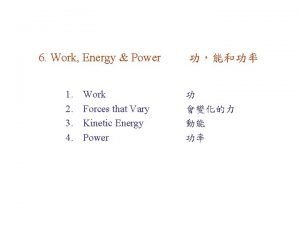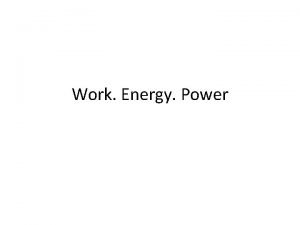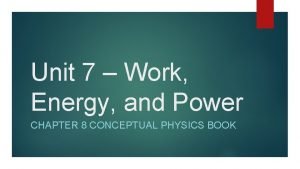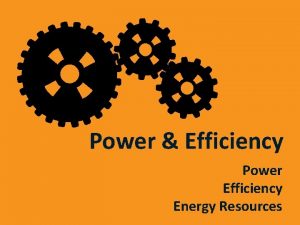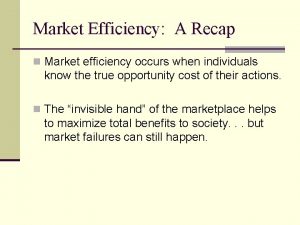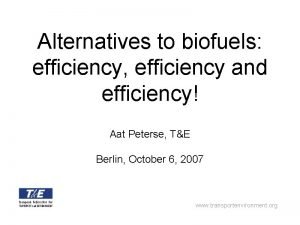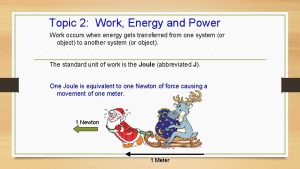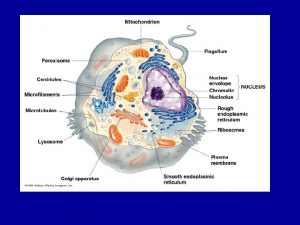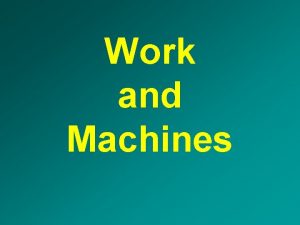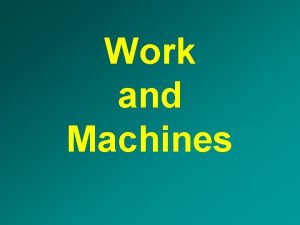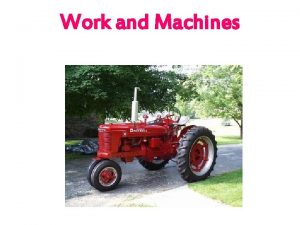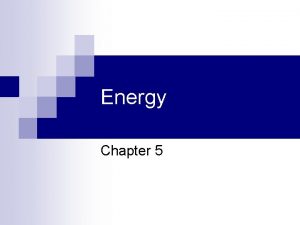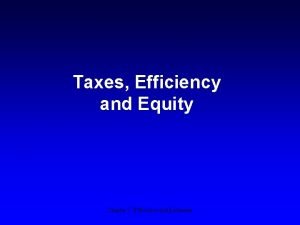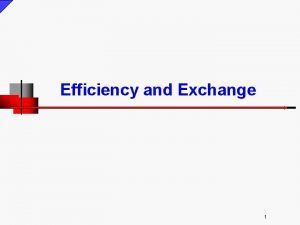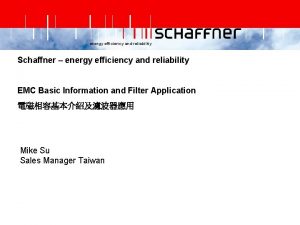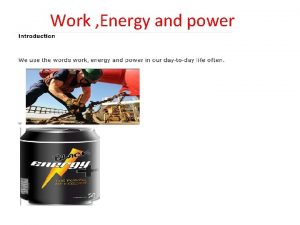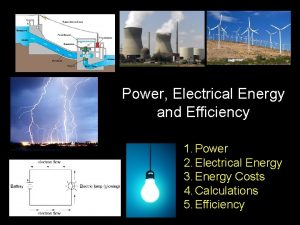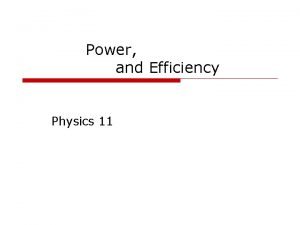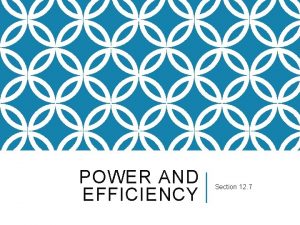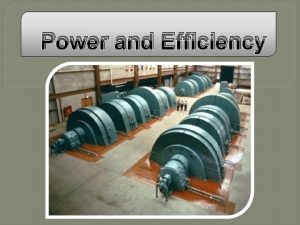Work Power and Efficiency Work occurs when a































- Slides: 31

Work, Power and Efficiency

Work occurs when a force causes an object to move -the object will move in the direction of the force.

• If you push a car , but the car does not move, has work been done? Why or why not?


• Doing work on an object transfers energy to the object. • Moving objects have kinetic energy

Doing work on a tray transfers energy to the tray. The added energy can be either kinetic energy or potential energy.

Check your understanding: • Visual check page 331 • Explain your answer

W= F x. D Calculating work Unit of measurement for work is the newton – meter , simply called the joule (J) A man applies a force of 500 N to push a truck 100 m down the street. How much work does he do?

• A student pushes a desk 2. 0 m across the room using a constant force of 25 N. How much work does the student do on the desk?

Lesson 1 -2

Bell Ringer : In which situation do you do more work? You lift a 75 N bowling ball 1 m off the floor. Or You lift a 50 N bowling ball 2 m off the floor. Explain Check understanding: Visual Check p 332

What is power? Power is the rate at which work is done. You can also think of power as how fast energy is transferred to an object

How to calculate power P = work (J)_ time (s) Unit of measurement for power is joules / second or watts (W)

• A boy does 18 J of work in 2. 0 s on his backpack as he lifts it from a table. How much power did he use on his backpack?

Lesson 1 -4

• How can you increase the power?

• How much power does it take to do 500 J of work in 10 sec? • • How much power does it take to lift 250 N, 40 m high in 2 seconds? • • • If it takes 20 N to move a box, how much power will be needed to move the box a distance of 5 meters in 5 seconds?

Exit Ticket: Do you agree or disagree? Explain 1. Work is done when you push a book across a table. 2. Doing work faster requires more power.

What is efficiency? • Machine – any device that makes doing work easier - Input force – force you apply to a machine - Output force – the force the machine applies

• The work you do is called the work input, • The work done by the machine is called the work output

Efficiency • The output work done by a machine never exceeds the input work. –Friction converts some of the input work to thermal energy. a machine’s efficiency is always less than 100%

• What is the efficiency of a hammer if the output work is 100 J and the input work is 500 J? A. 20% B. 40% C. 80%

Exit Ticket: • A man expends 100 J of work to move a box up an inclined plain. The amount of work produced is 80 J. What is the man's efficiency? – A. 20% – B. 80% – C. 800% – D. 200% • You pull a nail out of a piece of wood using a hammer. Explain why the nail feels warm.

Simple Machines • A device with few, if any, moving parts that makes it easier to do work

• Lever - consists of a bar and a pivot point

• Wheel and axle

• Pulley – is a wheel that turned by the action of a rope

• Inclined plane – a straight, slanted surface

• Screw – an inclined planed that is wrapped around a central bar

• Wedge – inclined plane that changes the direction of applied force

• Machines make work easier because they change the size or direction of the input force. • Machines do not save work.
 Work power and efficiency
Work power and efficiency Allocative efficiency and productive efficiency
Allocative efficiency and productive efficiency Productively efficient vs allocatively efficient
Productively efficient vs allocatively efficient Allocative efficiency vs productive efficiency
Allocative efficiency vs productive efficiency Mb=mc allocative efficiency
Mb=mc allocative efficiency Triangle of power
Triangle of power Greenhouse impact
Greenhouse impact Food efficiency ratio
Food efficiency ratio Which power amplifier has the highest collector efficiency
Which power amplifier has the highest collector efficiency Force distance trade off
Force distance trade off Solar power satellites and microwave power transmission
Solar power satellites and microwave power transmission Potential power
Potential power Dispersive power of grating increase with
Dispersive power of grating increase with Section 4 review physical science
Section 4 review physical science Define work and power
Define work and power Unit 14 lesson 1 drivers ed
Unit 14 lesson 1 drivers ed Work physic
Work physic How to calculate work and power
How to calculate work and power Chapter 14 work power and machines
Chapter 14 work power and machines Work power and machines
Work power and machines Chapter 14 work power and machines
Chapter 14 work power and machines Work, power and energy activities
Work, power and energy activities Chapter 8 work and power answers
Chapter 8 work and power answers Work done define
Work done define How are work and power related
How are work and power related Sheila has just arrived at the airport and is dragging
Sheila has just arrived at the airport and is dragging Work power energy and machines
Work power energy and machines W=fdcosθ meaning
W=fdcosθ meaning Work and power definition
Work and power definition Work power
Work power Work energy theorem in words
Work energy theorem in words Unit 7 work energy and power answers
Unit 7 work energy and power answers




